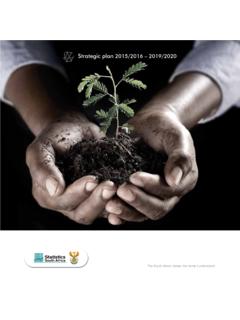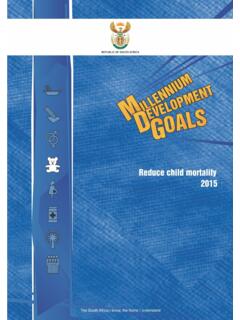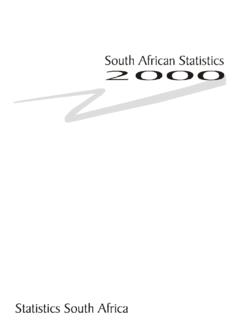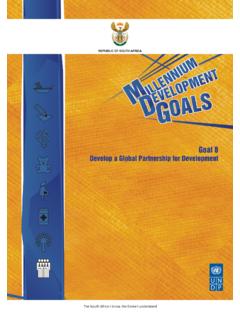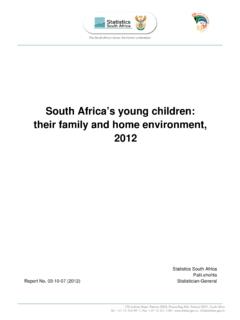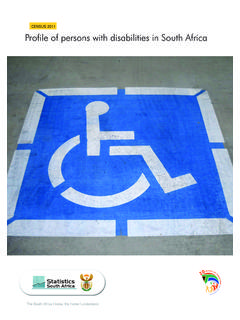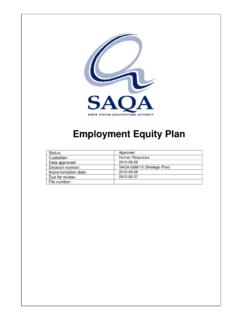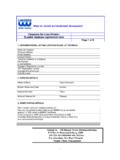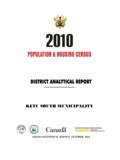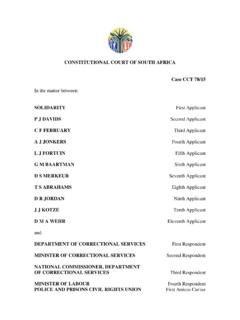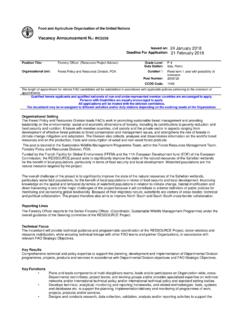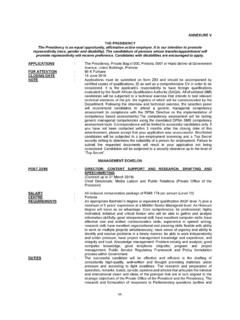Transcription of SOCIAL PROFILE 15DEC10 - statssa.gov.za
1 SOCIAL PROFILE of south Africa, 2002 2009 Report No. 03-19-00 Statistics south Africa Report 03-19-00 (2002-2009) i SOCIAL PROFILE of south Africa, 2002 2009 / Statistics south Africa Published by Statistics south Africa, Private Bag X44, Pretoria 0001 Statistics south Africa, 2010 Users may apply or process this data, provided Statistics south Africa (Stats SA) is acknowledged as the original source of the data; that it is specified that the application and/or analysis is the result of the user's independent processing of the data; and that neither the basic data nor any reprocessed version or application thereof may be sold or offered for sale in any form whatsoever without prior permission from Stats SA.
2 Stats SA Library Cataloguing-in-Publication (CIP) Data SOCIAL PROFILE of south Africa, 2002 2009 / Statistics south Africa. Pretoria: Statistics south Africa, 2010 Report 03-19-00 106 pp ISBN 978-0-621-39836-6 A complete set of Stats SA publications is available at Stats SA Library and the following libraries: National Library of south Africa, Pretoria Division National Library of south Africa, Cape Town Division Library of Parliament, Cape Town Bloemfontein Public Library Natal Society Library, Pietermaritzburg Johannesburg Public Library Eastern Cape Library Services, King William s Town Central Regional Library, Polokwane Central Reference Library, Nelspruit Central Reference Collection, Kimberley Central Reference Library, Mmabatho This report is available on the Stats SA website.
3 Copies are obtainable from: Printing and Distribution, Statistics south Africa Tel: (012) 310 8093 (012) 310 8251 (012) 310 8358 (012) 310 8161 Fax: (012) 321 7381 Email: Statistics south Africa Report 03-19-00 (2002-2009) ii FOREWORD The SOCIAL PROFILE of south Africa 2002-2009 is a new annual report produced by Statistics south Africa to analyse and explore changes in the situation of children, the youth, the elderly, women and disabled persons over time. The report uses General Household Survey (GHS) data from 2002 to 2009. The GHS is a household survey that has been executed annually by Stats SA since 2002 in response to a need expressed by the Government of south Africa to determine the level of development in the country and the performance of programmes and projects on a regular basis.
4 The survey was specifically designed to measure multiple facets of the living conditions of south African households, as well as the quality of service delivery in a number of key service sectors. The data therefore lends itself well to an analysis of vulnerable groups in society. The focal areas of this study have been chosen based on the current SOCIAL agenda of the Government and strategic priorities related to vulnerable groups. The report focuses on a number of broad areas within each vulnerable group, namely: household characteristics and living arrangements; vulnerability to hunger; health; poverty and SOCIAL grants; economic participation; education; and finally housing and access to basic services.
5 The study confirms that family structures are severely disrupted and that children remain disproportionately affected by poverty. Approximately 37% of children live in households without any employed members and SOCIAL grants play a vital role in cushioning the impact of poverty and improving access to food and education. Youth, particularly those aged 15-24, are very vulnerable to poverty and hunger. Yet, they are not directly targeted by the country s advanced SOCIAL assistance programmes. Youth are often forced to suspend their education and run the risk of becoming unemployable and falling into chronic systemic poverty. In 2009, more than 3,3 million youth were neither employed nor attending any educational institution.
6 Past race and gender based discrimination continue to affect the living conditions of older people in south Africa, and most remain dependent on government transfers. Older persons are relied upon by others to share their SOCIAL grants and they are increasingly called upon to take over the nurturing responsibilities that their children are perhaps unable to perform due to illness or absence as a result of labour migration. Although substantial progress has been made to address gender inequality and discrimination, women remain vulnerable. Poverty patterns continue to be gendered and female headed households are more likely to have low incomes, to be dependent on SOCIAL grants, and less likely to have employed members.
7 Women and female headed households are predominantly responsible for the care for children. Pali Lehohla Statistician-General Statistics south Africa Report 03-19-00 (2002-2009) iii TABLE OF CONTENTS Limitations to the Main SOCIAL PROFILE OF PROFILE of children living in south Africa ..8 Household characteristics and living arrangements ..9 Vulnerability to hunger ..14 Health services ..17 Income poverty and SOCIAL grants ..18 Household income ..18 SOCIAL grants ..20 Education ..21 Housing and Access to basic services.
8 24 Summary and Policy SOCIAL PROFILE OF Introduction ..30 The youth and development ..30 PROFILE of youth living in south Africa ..31 Household characteristics and living arrangements ..31 Vulnerability to hunger ..35 Income poverty and SOCIAL grants ..37 Household income ..37 SOCIAL grants ..39 Economic Education ..42 Education enrolment and attainment ..42 Unemployed and non studying youth ..44 Housing and access to basic Basic Summary and Policy SOCIAL PROFILE OF Introduction.
9 53 PROFILE of women in south Household characteristics and living arrangements ..54 Vulnerability to hunger ..59 Poverty and SOCIAL grants ..64 Economic Education and Housing and access to basic Summary and Policy Statistics south Africa Report 03-19-00 (2002-2009) ivSOCIAL PROFILE OF OLDER PROFILE of older people in south Africa ..80 Household characteristics and living arrangements ..80 Vulnerability to hunger ..86 Poverty and SOCIAL grants ..91 Economic activity ..93 Education and literacy.
10 94 Housing and access to basic Summary and Recommendations ..100 Statistics south Africa Report 03-19-00 (2002-2009) 1 INTRODUCTION Background Since 1994 the south African Government has increasingly adopted a SOCIAL agenda, channelling a significant amount of effort and resources towards identifying vulnerable groups in society, crafting legislation that would protect their interests and developing and implementing programmes and strategies to support them. Today the vulnerabilities of children, the youth, the elderly, women and the disabled are still inextricably linked to harsh apartheid-era legislation aimed at subjugating black south Africans and are further exacerbated by systemic poverty and inequality which continuous to manifest itself along a racial divide.

